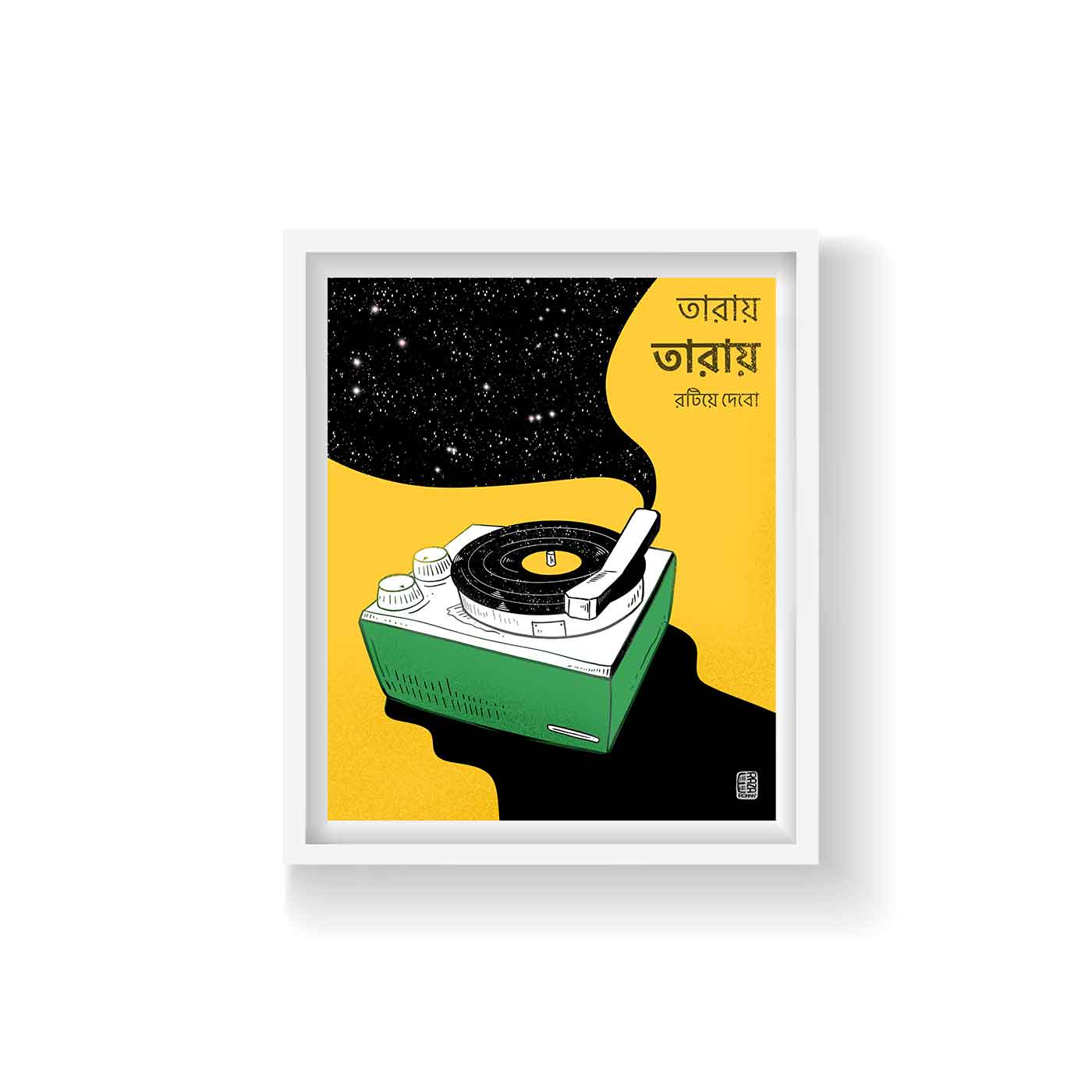Discovering Taray: A Thread Through Time And Culture
Have you ever stopped to think about the stories woven into the fabric of our world, the quiet whispers of history carried in everyday things? It's a rather fascinating thought, isn't it? Just like a familiar tune or a helpful digital tool, certain cultural elements hold a special place, connecting us to something much bigger than ourselves. Today, we're going to explore something quite special: the concept of taray. It's a word that, for many, might spark curiosity, yet it holds a deep resonance for those who know its meaning.
This exploration of taray takes us on a journey, a bit like how we connect with others through a screen, or how a classic song can bring back a flood of memories. Taray, you see, isn't just a simple term; it embodies a rich cultural tapestry, a testament to human ingenuity and artistic expression. It speaks of traditions passed down through generations, of skills honed over centuries, and of a unique way of seeing the world. We'll look at what makes it so distinct and why it continues to matter today.
So, whether you're someone who loves to learn about different cultures, or perhaps you're just a little curious about unique forms of artistry, this piece is for you. We'll try to unfold the layers of taray, seeing how it connects people and stories, much like how zoom helps consolidate communications and connect people from different places. It's a way to appreciate the diverse beauty that exists across our globe, and to understand the enduring spirit of human creativity. You know, it's really quite remarkable.
Table of Contents
- What Exactly Is Taray?
- History and Cultural Significance
- The Art of Creating Taray
- Taray in the Modern World
- Preserving the Legacy of Taray
- Frequently Asked Questions About Taray
What Exactly Is Taray?
When we talk about taray, we are, in a way, talking about a very particular kind of cultural expression, often taking the form of a traditional textile or garment. It's something that has been part of a community's identity for a very long time, you know. Think of it as a piece of living history, worn and used, rather than just something displayed in a museum. It's typically crafted with great care, using methods that have been handed down from one generation to the next, which is quite impressive when you consider it.
The materials used for taray can vary, but they often come from natural sources found in the local environment. This could mean fibers from plants, perhaps even certain barks or leaves, which are then processed in a very specific way. The colors you see in taray are also often derived from nature, using dyes made from roots, leaves, or even certain insects. This natural approach gives taray a distinct look and feel, and it's a bit different from mass-produced items, obviously.
What makes taray truly unique, however, isn't just the materials or the colors. It's the patterns and designs that are woven or embroidered into it. These designs are not just decorative; they often carry deep symbolic meanings. They can tell stories of a community's beliefs, its history, or its connection to the natural world around it. So, when you see a piece of taray, you're not just looking at a pretty pattern; you're seeing a visual language, in a way, that communicates generations of wisdom and artistry.
History and Cultural Significance
The history of taray is, for many communities, deeply intertwined with their very beginnings. It's not something that appeared overnight; rather, it evolved over centuries, shaped by the environment, the available resources, and the unique cultural practices of the people who created it. We can almost imagine ancient hands working these fibers, perhaps under the shade of a large tree, passing on techniques that would become central to their way of life. It's a very long story, indeed.
In many societies, taray played a significant role beyond just clothing. It was often used for ceremonial purposes, perhaps for important rituals, or as a mark of status within the community. Sometimes, it was exchanged as a valuable gift, symbolizing alliances or respect. It could also be a form of currency, a way to trade for other goods and services. So, it wasn't just something to wear; it was a fundamental part of their social and economic fabric, you know.
The patterns and motifs found in taray are incredibly important, too. Each line, each shape, each color combination can carry specific meanings. These might represent ancestral spirits, important animals, natural landscapes, or even historical events. Learning to read these patterns is like learning a whole new language, and it offers a really deep insight into the worldview of the people who made them. It's a bit like how a specific melody in a song can evoke a particular feeling or memory, isn't it?
Just as Elvis Presley became a cultural icon, his music shaping popular culture and continuing to resonate decades later, taray, in its own way, holds a similar enduring legacy within its community. It's a symbol of identity, a connection to the past, and a source of pride. The stories and traditions woven into its threads are passed down, keeping the spirit of the ancestors alive. It's a powerful thing, that kind of connection.
The Art of Creating Taray
Making taray is, quite honestly, a labor of love and immense skill. It's not a quick process, by any stretch. The creation often begins with gathering the raw materials, which might involve careful harvesting of plants or other natural resources. This initial step requires a deep understanding of the local environment, knowing when and how to collect what's needed without harming nature. It's a very respectful process, typically.
Once the materials are gathered, they undergo a series of transformations. This could involve soaking, drying, pounding, or spinning to prepare the fibers. Each step is crucial, and any mistake can affect the final quality of the taray. The natural dyes are then prepared, often using traditional recipes that have been perfected over many generations. These recipes might involve specific plants, minerals, or even certain types of soil to achieve the desired colors. It's a bit like a complex cooking process, in a way.
The actual weaving or crafting of taray is where the true artistry comes to life. This is often done on traditional looms, which themselves are often handcrafted tools. The weaver meticulously interlaces the threads, slowly bringing the intricate patterns to life. This process requires incredible patience, precision, and a deep knowledge of the designs. It's not just about making a fabric; it's about telling a story with every single thread. You know, it's really quite mesmerizing to watch someone create it.
The skills involved in creating taray are typically passed down within families, from elders to younger generations. This ensures that the knowledge and techniques are preserved, keeping the tradition alive. It's a continuous learning process, and each generation might add their own subtle touches while staying true to the core methods. This intergenerational sharing is what makes taray such a vibrant and living art form, actually.
Taray in the Modern World
Even in our fast-paced, digital world, taray continues to hold its place. While it might not be worn every day by everyone, its significance remains strong. Many communities still use taray for special occasions, ceremonies, or cultural festivals. It's a way to honor their heritage and express their identity in a very visible and tangible way. It's pretty cool how something so old can still be so relevant.
There's also a growing appreciation for taray in broader contexts. Designers, artists, and cultural enthusiasts are recognizing its unique beauty and craftsmanship. You might see elements of taray patterns or weaving techniques inspiring modern fashion or home decor. This renewed interest helps to bring taray to a wider audience, ensuring that its artistry is seen and valued beyond its traditional setting. It's a really positive development, for sure.
However, bringing taray into the modern world also presents certain challenges. There's a need to balance tradition with innovation, ensuring that the authenticity of taray is preserved while also finding new ways for it to thrive. This might involve supporting the artisans who create it, or finding sustainable markets for their work. It's a delicate balance, obviously, but one that is very important for the future of this art form. You can learn more about cultural preservation efforts on our site, which is quite interesting.
Just as Zoom Workplace has adapted to connect people in various settings, from the boardroom to the classroom, taray, in its own way, finds new spaces and uses while retaining its core identity. It shows how traditional forms can evolve and remain meaningful in a changing world. It's about connecting the past with the present, and finding new avenues for expression, which is a very human thing to do, really.
Preserving the Legacy of Taray
The preservation of taray is a vital effort, ensuring that this rich cultural heritage isn't lost to time. It involves more than just keeping old pieces safe; it's about keeping the knowledge, the skills, and the stories alive. This often means supporting the artisans who still practice the craft, providing them with resources and opportunities to continue their work. It's a very hands-on kind of preservation, you know.
Educational initiatives also play a huge part. Teaching younger generations about the history, meaning, and creation of taray helps to ignite their interest and encourages them to carry on the tradition. Workshops, cultural programs, and community events can all contribute to this. It's about fostering a sense of pride and connection to their heritage, which is a rather powerful motivator.
Furthermore, ethical sourcing and fair trade practices are crucial when taray pieces are sold to a wider market. This ensures that the artisans are fairly compensated for their incredible skill and labor, and that the production methods remain sustainable. It's about respecting the people and the culture behind the craft, which is something we should all aim for. You can also explore more about sustainable cultural practices and their impact.
The efforts to preserve taray are a bit like maintaining a vast, intricate network, similar to how Zoom helps keep communications flowing seamlessly. It requires continuous attention, collaboration, and a shared commitment to ensuring that these valuable connections, both cultural and interpersonal, endure for future generations. It's a big task, but a very rewarding one, honestly.
Frequently Asked Questions About Taray
What materials are typically used to make taray?
Taray is usually made from natural fibers, often sourced directly from the local environment where it's created. This could include fibers from specific plants, barks, or even certain types of leaves. The dyes used for coloring are also commonly natural, derived from roots, flowers, or other organic materials. It's a very earth-friendly process, in a way.
How is taray different from other traditional textiles?
The uniqueness of taray often comes down to its specific patterns, the traditional weaving or crafting techniques employed, and the cultural meanings embedded within its designs. Each community's taray has its own distinct visual language and historical context, making it different from textiles made by other groups, even within the same region. It's like how different musical genres have their own unique sounds, you know.
Can taray be worn for modern occasions?
While taray traditionally holds deep ceremonial or cultural significance, it is increasingly being adapted for modern use. Some designers incorporate taray elements into contemporary fashion, or people might wear it for special cultural events or as a statement piece. It shows how traditional art can find new life and appreciation in today's world, which is really quite lovely.

Taray International Corporation - Tire Retreading Equipment & Supplies

Sarah Taray II

Taray-Taray---Feelings with White Frame